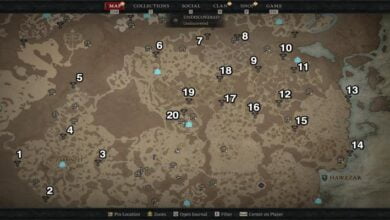The Essential Guide to Warhammer 40,000: Kill Team
Introduction
If you’re a fan of Warhammer 40,000 and love engaging in tactical battles with elite operatives, then Warhammer 40,000: Kill Team is the game for you. In this guide, we’ll walk you through the core rules and provide valuable insights on how to master the game.
Tools of War
To play Warhammer 40,000: Kill Team, you’ll need a collection of Citadel miniatures, each accompanied by their faction army list, which can be found in various Warhammer 40,000: Kill Team publications. Additionally, combat gauges, a killzone, and dice are essential tools for gameplay. Tokens can also come in handy to keep track of your miniatures’ actions, wounds, and special abilities.
Operatives and Kill Teams
In Kill Team, you don’t select individual operatives, but rather a specialist squad known as a Kill Team. Your operatives are referred to as “friendly” operatives, while your opponent’s operatives are the “enemy” operatives. Your faction’s army list will provide you with a range of Kill Teams to choose from. During battle, all your friendly operatives work together as your Kill Team.
Distances
Warhammer 40,000: Kill Team employs combat gauges to measure distances accurately. These gauges come in different shapes to represent varying distances. Remember to refer to the rules for converting the graded distances into inches if you prefer using a tape measure.
Datacards
Each operative in your Kill Team has its own set of individual rules, known as a datacard, which outlines their characteristics, equipped weapons, and unique abilities. Familiarize yourself with these datacards to fully understand the capabilities of your operatives.
Battle Structure
A battle of Warhammer 40,000: Kill Team consists of four Turning Points, each comprising three phases that must be completed in order. These Turning Points dictate the flow of the battle and ensure a dynamic gameplay experience. The phases include the Initiative Phase, Strategy Phase, and Firefight Phase.
Wounds and Damage
As with any battle, operatives in Kill Team can suffer wounds and damage. Understanding how wounds are allocated and the effects of damage is crucial for strategic gameplay. Be prepared to adapt your tactics as the scenario unfolds.
Controlling Objective Markers and Tokens
Objective markers and tokens play a significant role in Kill Team battles. Strategize your movements to secure these markers and tokens, as they provide various advantages and opportunities to gain control over the battlefield.
Line of Sight
Line of Sight is an essential aspect of tactical gameplay. Understanding which terrain features provide cover and obstruct line of sight will greatly influence your decision-making and the outcome of battles.
Killzones
Killzones create immersive and engaging environments for your operatives to fight in. They present various challenges and opportunities for strategic maneuvering. Familiarize yourself with the rules and features of the killzone you are playing in to gain a tactical advantage.
Terrain Traits
Killzones consist of terrain features with distinct traits that impact gameplay. If you are using a predefined killzone, these traits will already be specified. However, if you are creating your own killzone, make sure to agree on the traits of each terrain feature with your opponent before the battle.
Moving Through Terrain
Maneuvering through terrain can be a crucial element in gaining an advantage over your opponent. Climbing obstacles, such as walls or pipes, can provide unique vantage points and strategic positions. Understand the rules for climbing and plan your moves accordingly.
Example Boards
Here are some examples of ideal and suboptimal killzone setups. Consider the advantages and disadvantages of each layout to formulate effective strategies for your battles. Choose a setup that aligns with your preferred playstyle and narrative objectives.
Example Terrain Features
Different terrain features add depth and complexity to battles in Kill Team. Whether it’s buildings, industrial structures, or munitorum containers, each terrain feature offers unique benefits and challenges. Discuss and agree upon the traits of these features with your opponent to ensure a fair and balanced gameplay experience.
Ways to Play
Warhammer 40,000: Kill Team provides various ways to play, allowing you to tailor your battles to match your preferences. Whether you enjoy matched play or narrative play, explore the different options and missions available to create exciting and immersive gameplay experiences.
In conclusion, mastering Warhammer 40,000: Kill Team requires a deep understanding of the core rules, terrain features, and tactics involved. Remember to prioritize E-E-A-T (Experience, Expertise, Authoritativeness, and Trustworthiness) principles to establish trust among your fellow players. So gather your miniatures, set up your Kill Team, and prepare for epic battles in the grim darkness of the 41st millennium!


